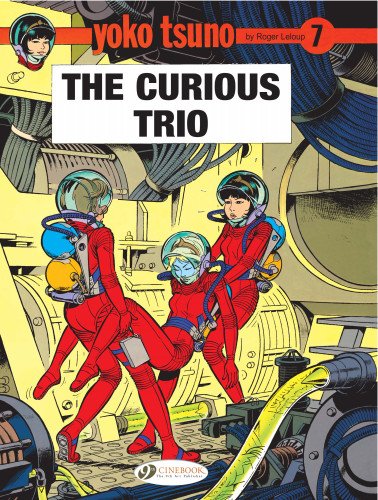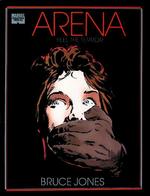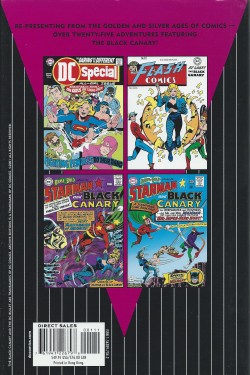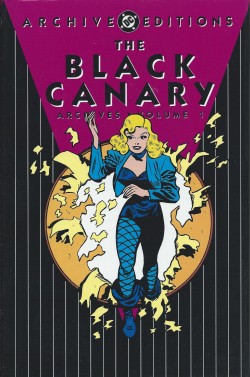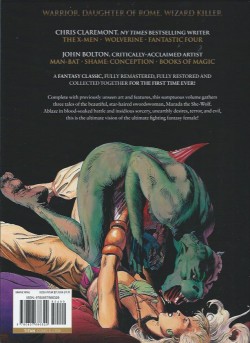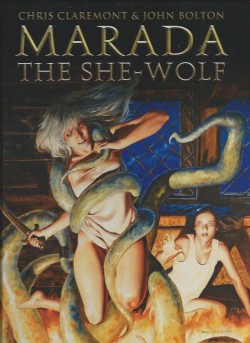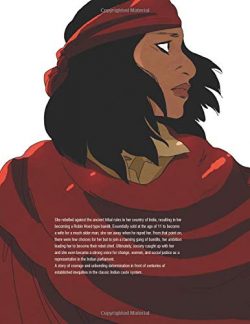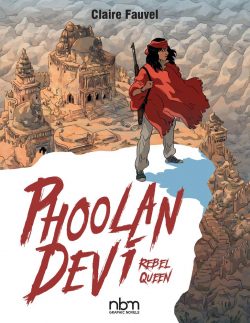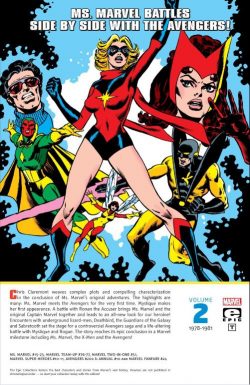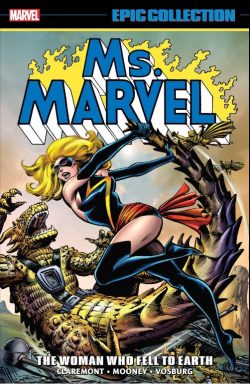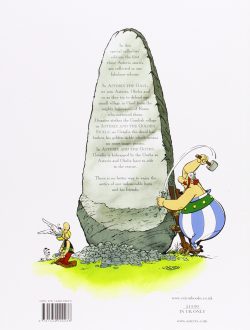
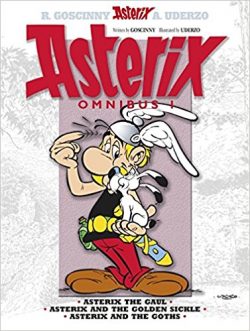
By René Goscinny & Albert Uderzo, translated by Anthea Bell & Derek Hockridge (Orion)
ISBN: 978-0-75289-154-5(HB) 978-1-44400-423-6(TPB)
I’ve just heard the sad news about Albert Uderzo, who has just passed away after 92 amazing, gloriously productive and fun-filled years. In the current climate of horrific global crisis, it’s ultimately just one more death, no more or less important than any other, but I’m compelled to mark his end with sadness, inexpressible gratitude and this rerun of a review for his greatest work.
In a career absolutely packed with joyous invention, Uderzo brought happiness and inspiration to generations of readers across the world through Asterix and his many other creations, so I can only say “thank you†to him and urge you to revisit his works if you’re already au fait. If you have never seen his genius in action – especially in conjunction with his perfect partner René Goscinny – this collection is the ideal place to start, and you won’t be sorry…
Asterix the Gaul is probably France’s greatest literary export. The feisty, wily little warrior who fought the iniquities and viewed the myriad wonders of Julius Caesar‘s Roman Empire with brains, bravery and – whenever necessary – a magical potion imbuing the imbiber with incredible strength, speed and vitality, is the go-to reference all us non-Gallic gallants when we think of France.
The diminutive, doughty darling was created at the close of the 1950s by two of our artform’s greatest masters…
René Goscinny is arguably the most prolific and remains one of the most-read writers of comic strips the world has ever known. Born in Paris in 1926, he grew up in Argentina where his father taught mathematics. From an early age René showed artistic promise. He studied fine arts and graduated in 1942. Three years later, while working as junior illustrator at an ad agency, his uncle invited him to stay in America, where he worked as a translator.
After National Service in France, he returned to the States and settled in Brooklyn, pursuing an artistic career and becoming, in 1948, an assistant for a small studio which included Harvey Kurtzman, Will Elder, Jack Davis and John Severin, as well as European giants-in-waiting Maurice de Bévère (Morris, with whom from 1955-1977 Goscinny produced Lucky Luke) and Joseph Gillain (Jijé).
Goscinny also met Georges Troisfontaines, head of the World Press Agency, the company that provided comics for the French magazine Le Journal de Spirou.
After contributing scripts to Belles Histoires de l’Oncle Paul and Jerry Spring, Goscinny was promoted to head of World Press’ Paris office where he met his ultimate creative collaborator Albert Uderzo. In his spare time, Rene also created Sylvie and Alain et Christine with Martial Durand (Martial) and Fanfan et Polo, drawn by Dino Attanasio.
In 1955, Goscinny, Uderzo, Charlier and Jean Hébrard formed the independent syndicate Édipress/Édifrance, creating magazines for business and general industry (Clairon for the factory union and Pistolin for a chocolate factory). With Uderzo, René spawned Bill Blanchart, Pistolet and Benjamin et Benjamine, whilst illustrated his own scripts for Le Capitaine Bibobu.
Under nom-de-plume Agostini he wrote Le Petit Nicholas (drawn by Jean-Jacques Semp̩), and in 1956 began an association with revolutionary periodical Le Journal de Tintin, writing for various illustrators including Attanasio(Signor Spagetti), Bob De Moor (Monsieur Tric), Mar̩chal (Prudence Petitpas), Berck (Strapontin), Globule le Martienand Alphonse for Tibet; as well as Modeste et Pompon for Andr̩ Franquin, and Рwith Uderzo Рthe fabulously funny adventures of inimitable Indian brave Oumpah-Pah. He also wrote for the magazines Paris-Flirt and Vaillant.
In 1959, Édipress/Édifrance launched Pilote, and Goscinny went into overdrive. The first issue featured re-launched versions of Le Petit Nicolas, Jehan Pistolet/Jehan Soupolet, new serials Jacquot le Mousse and Tromblon et Bottaclou(drawn by Godard), plus a little something called Astérix le gaulois: inarguably the greatest achievement of his partnership with Uderzo.
When Georges Dargaud bought Pilote in 1960, Goscinny became Editor-in-Chief, but still found time to add new series Les Divagations de Monsieur Sait-Tout (with Martial), La Potachologie Illustrée (Cabu), Les Dingodossiers (Gotlib) and La Forêt de Chênebeau (Mic Delinx).
He also wrote frequently for television, but never stopped creating strips such Les Aventures du Calife Haroun el Poussahfor Record and illustrated by Swedish artist Jean Tabary. A minor success, it was re-tooled as Iznogoud when it transferred to Pilote. Goscinny died far too young, in November 1977.
Alberto Aleandro Uderzo was born on April 25th 1927, in Fismes, on the Marne, a child of Italian immigrants. As a boy reading Mickey Mouse in Le Pétit Parisien, he showed artistic flair from an early age. Alberto became a French citizen when he was seven and dreamed of becoming an aircraft mechanic, but at 13 he became an apprentice of the Paris Publishing Society, learning design, typography, calligraphy and photo retouching.
When WWII broke out, he spent time with farming relatives in Brittany, joining his father’s furniture-making business. Brittany beguiled Uderzo: when a location for Asterix’s idyllic village was being decided upon the region was the only choice…
In the post-war rebuilding of France, Uderzo returned to Paris to become a successful illustrator in the country’s burgeoning comics industry. His first published work – a pastiche of Aesop’s Fables – appeared in Junior and, in 1945, he was introduced to industry giant Edmond-François Calvo (whose masterpiece The Beast is Dead is long overdue for the world’s closer attention…).
Young Uderzo’s subsequent creations included indomitable eccentric Clopinard, Belloy, l’Invulnérable, Prince Rollin and Arys Buck. He illustrated Em-Ré-Vil’s novel Flamberge, worked in animation, as a journalist, as an illustrator for France Dimanche and created vertical comic strip ‘Le Crime ne Paie pas’ for France-Soir.
In 1950, he drew a few episodes of the franchised European version of Fawcett’s Captain Marvel Jr. for Bravo!
Another inveterate traveller, the young artist met Goscinny in 1951. Soon fast friends, they decided to work together at the new Paris office of Belgian Publishing giant World Press. Their first collaboration was in November of that year; a feature piece on savoir vivre (how to live right or gracious living) for women’s weekly Bonnes Soirée, after which an avalanche of splendid strips and serials poured forth.
Jehan Pistolet and Luc Junior were created for La Libre Junior and they produced a comedy Western starring a very Red (but not so American) Indian who evolved into Oumpah-Pah. In 1955, with the formation of Édifrance/Édipresse, Uderzo drew Bill Blanchart for La Libre Junior, replacing Christian Godard on Benjamin et Benjamine before, in 1957 adding Charlier’s Clairette to his bulging portfolio.
The following year, he made his Tintin debut, as Oumpah-Pah finally found a home and rapturous audience. Uderzo also illuminated Poussin et Poussif, La Famille Moutonet and La Famille Cokalane
When Pilote launched in 1959, Uderzo was the major creative force for the new magazine, limning Charlier’s Tanguy et Laverdure and a humorous historical strip about Romans…
Although Asterix was a massive hit from the start, Uderzo continued working with Charlier on Michel Tanguy, (subsequently Les Aventures de Tanguy et Laverdure), but soon after the first serial was collected in a single volume as Astérix le gaulois (in 1961), it became clear that the series would demand most of his time – especially as the incredible Goscinny never seemed to require rest or run out of ideas (after the writer’s death, the publication rate of Asterix tales dropped from two per year to one volume every three-to-five).
By 1967, Asterix occupied all Uderzo’s time and attention. In 1974 the partners formed Idéfix Studios to fully exploit their inimitable creation, and when Goscinny passed away three years later, Uderzo had to be convinced to continue the adventures as writer and artist. Happily, he gave in and produced a further ten volumes before retiring in 2009.
According to UNESCO’s Index Translationum, Uderzo is the 10th most-often translated French-language author in the world and 3rd most-translated French language comics author – right behind his old mate René and the grand master Hergé.
So what’s it all about?
Like all entertainments the premise works on two levels: as an action-packed comedic romp of sneaky and bullying baddies coming a-cropper for younger readers and as a pun-filled, sly and witty satire for older, wiser heads, transformed here by the brilliantly light touch of master translators Anthea Bell & Derek Hockridge (who played no small part in making the indomitable little Gaul so very palatable to the English tongue).
Originally published in Pilote #1-38 (29th October 1959-4th July 1960, with the first page appearing a week earlier in a promotional issue #0, distributed on June 1st 1959), the story is set on the tip of Uderzo’s beloved Brittany coast in the year 50BC.
Here a small village of redoubtable warriors and their families frustrate every effort of the immense but not so irresistible Roman Empire to complete their conquest of Gaul. Unable to defeat these Horatian hold-outs, the Empire resorts to a policy of containment leaving the little seaside hamlet hemmed in by the heavily fortified permanent garrisons of Totorum, Aquarium, Laudanum and Compendium.
The Gauls don’t care: they daily defy the world’s greatest military machine by just going about their everyday affairs, protected by a magic potion provided by the resident druid and the shrewd wits of a rather diminutive dynamo and his simplistic best friend…
In Asterix the Gaul this immaculate comedy-drama scenario is hilariously demonstrated when Centurion Crismus Bonus– fed up with his soldiers being casually beaten up by the fiercely free Frenchmen – sends reluctant spy Caligula Minus to ferret out the secret of their incredible strength.
The affable insurgents take the infiltrator in and, soon dosed up with potion, the perfidious Roman escapes with the answer – if not the formula itself…
Soon after, wise Druid Getafix is captured by the invaders and the village seems doomed, but wily Asterix is on the case. Breaking into Compendium and determined to teach the Romans a lesson, he drives them crazy for ages by resisting all efforts at bribery and coercion, until abruptly wizard and warrior seemingly capitulate and make the Romans a magic potion – but not the one the rapacious oppressors were hoping for…
Although comparatively raw and unpolished, the good-natured, adventurous humour and sheer energy of the yarn barrels along, delivering barrages of puns, oodles of insane situations and loads of low-trauma slapstick action, all marvellously rendered in Uderzo’s seductively stylish bigfoot art-style.
From the second saga on the unique and expanding cast would encroach on events, especially the unique and expanded, show-stealing sidekick Obelix – who had fallen into a vat of potion as a baby – and became a genial, permanently superhuman, eternally hungry foil to our little wise guy…
Asterix and the Golden Sickle was originally serialised in Pilote #42-74 and recounts the disastrous consequences of Getafix losing his ceremonial gold sickle just before the grand Annual Conference of Gaulish Druids. Since time is passing and no ordinary replacement will suffice to cut ingredients for magic potion, Asterix offers to go all the way to Lutetia (you can call it Paris if you want) to find another.
As Obelix has a cousin there – Metallurgix the Smith – he also volunteers for the trip and the punning pair are swiftly off, barely stopping to teach assorted bandits the errors of their pilfering ways but still finding a little time to visit many roadside inns and taverns serving traditional roast boar…
There is concurrently a crisis in Lutetia: a mysterious gang is stealing all the Golden Sickles and forcing prices up. The druid community is deeply distressed and, more worrying still, master sickle-maker Metallurgix has gone missing. Asterix and Obelix investigate the dastardly doings in their own bombastic manner and discover a nefarious plot that seems to go all the way to the office of the local Roman Prefect…
The early creative experiment was quickly crystallizing into a supremely winning format of ongoing weekly episodes slowly building into complete and readily divisible adventures. The next epic cemented the strip’s status as a popular icon of Gallic excellence.
Asterix and the Goths ran from 1962-1963 and followed the dangling plot-thread of the Druid Conference as Getafix, brand new sickle in hand, sets off for the Forest of the Carnutes to compete. However, on the Gaul’s Eastern border savage Goths – barbarians who remained unconquered by the might of the empire – crossed into pacified Roman territory. The barbarians are intent on capturing the mightiest Druid and turning his magic against the rule of Julius Caesar…
Although non-Druids aren’t allowed into the forest, Asterix and Obelix had accompanied Getafix to its edge, and as the competition round of the Conference ends in victory for him and his power-potion, the Goths strike, abducting him in his moment of triumph…
Alerted by fellow Druid Prefix, our heroic duo track the kidnappers, but are mistaken for Visigoths by Roman patrols, allowing the Goths to cross the border into Germania. Although Romans are no threat, they can be a time-wasting hindrance, so Asterix and Obelix disguise themselves as Romans to invade the Barbarian lands…
Well-used to being held prisoner by now, Getafix is making himself a nuisance to his bellicose captors and a genuine threat to the wellbeing of his long-suffering translator. When Asterix and Obelix are captured dressed as Goths, the wily Gauls conceive a cunning plan to end the ever-present threat of Gothic invasion – a scheme that continues successfully for almost two thousand years…
Asterix is one of the most popular comics in the world, translated into 111 languages; with a host of animated and live-action movies, assorted games and even his own theme park (Parc Astérix, near Paris). More than 380 million copies of 38 Asterix books have been sold worldwide, making Goscinny & Uderzo France’s bestselling international authors.
This is sublime comics storytelling and you’d be as Crazy as the Romans not to increase that statistic by finally getting around to acquiring your own copies of this fabulous, frolicsome French Folly.
© 1961-1963 Goscinny/Uderzo. Revised English translation © 2004 Hachette. All rights reserved.

